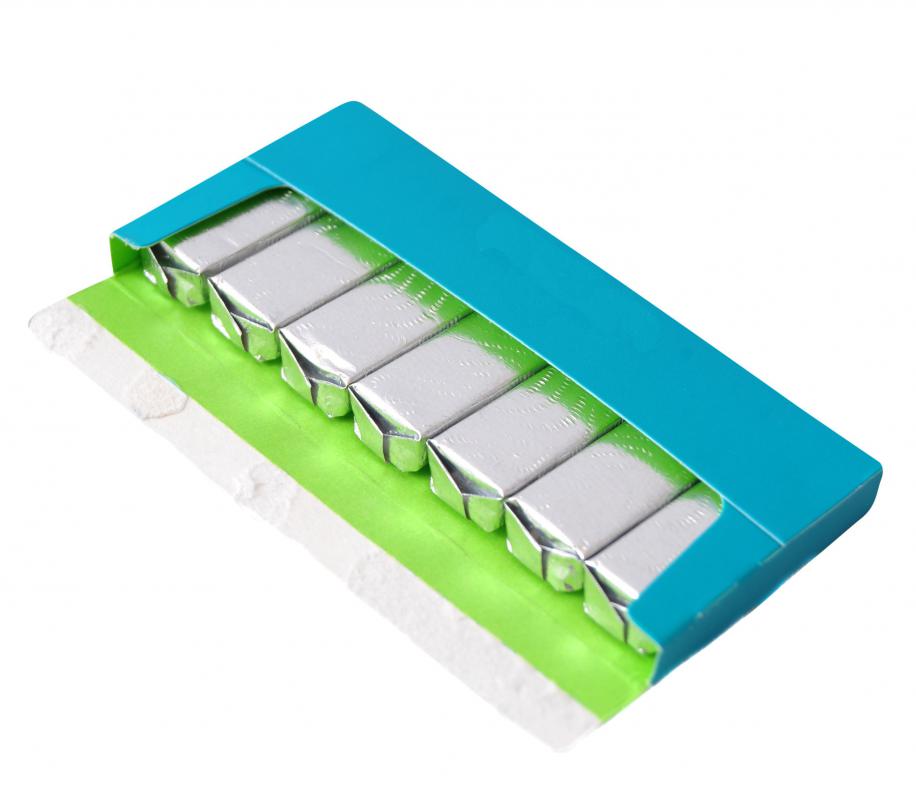At WiseGEEK, we're committed to delivering accurate, trustworthy information. Our expert-authored content is rigorously fact-checked and sourced from credible authorities. Discover how we uphold the highest standards in providing you with reliable knowledge.
What is Nicotine Replacement Therapy?
Nicotine is the addictive ingredient in tobacco that makes it difficult for people to quit smoking cigarettes. Nicotine replacement therapy, available in many forms, administers a controlled amount of the substance and is designed to reduce cravings and improve an individual’s chances of successful smoking cessation. The most common modes of therapy include chewing gum and lozenges infused with the chemical, and transdermal patches that adhere to the skin to deliver the substance. Most options are available over-the-counter. Many nasal sprays and inhalers, on the other hand, often require a doctor’s prescription.
Since the mid-1990s, the nicotine patch has been available for people who wish to quit smoking. Each morning, the user applies a medicated patch to the skin, and within 30 minutes of application, low doses of nicotine reach the brain. Cravings for the substance are usually relieved. Throughout the day, it continues to deliver the chemical. While there may be some symptoms of withdrawal, they are often less bothersome than smoking cessation without the use of nicotine replacement therapy.

During the first six weeks of use, the average smoker begins nicotine replacement therapy with the highest dose of a single patch containing the chemical. After this initial period, a mid-level, or lower dosage can be applied for two weeks, followed by the lowest available dose for the final two weeks. After successful completion of the ten-week plan, many people can discontinue its use and begin a smoke-free, nicotine-free life. For those who prefer a method that does not provide consistent nicotine delivery, there are many other options.

Medicated gum is the oldest form of nicotine replacement therapy, used since the 1980s. The methodology is different from the patch. Instead of receiving a continuous amount of the chemical over a 12 to 24 hour period, people chew the medicated gum when they experience symptoms of withdrawal. Discomfort usually subsides within several minutes. Some smokers find this technique easier and more beneficial, while others may feel that the taste of the gum is unpleasant.

Lozenges that contain nicotine work in a similar manner. People trying to quit smoking can use this product when withdrawal symptoms are present. Like transdermal patches and gum, it is generally available without a prescription. The use of nicotine sprays and inhalers are also methods that may prove helpful.
To improve their chances of quitting, people are often advised to take a multi-disciplinary approach. Even when nicotine replacement therapy is used, and successful in relieving acute cravings, many individuals still have difficulty because the habit of smoking becomes ingrained. Some tobacco users visit hypnotherapists or psychologists to help them overcome their addictions. Others solicit support from friends and loved ones.

Some people find that incorporating prescription medication, in conjunction with nicotine replacement therapy, offers an easier transition into a smoke-free lifestyle. For instance, both bupropion and varenicline work by stimulating certain chemicals in the brain, to decrease cravings and withdrawal symptoms. While these medications do not introduce nicotine into the body, they do alter the way the brain perceives the substance, which thereby can make cigarettes less desirable.
AS FEATURED ON:
AS FEATURED ON:














Discuss this Article
Post your comments